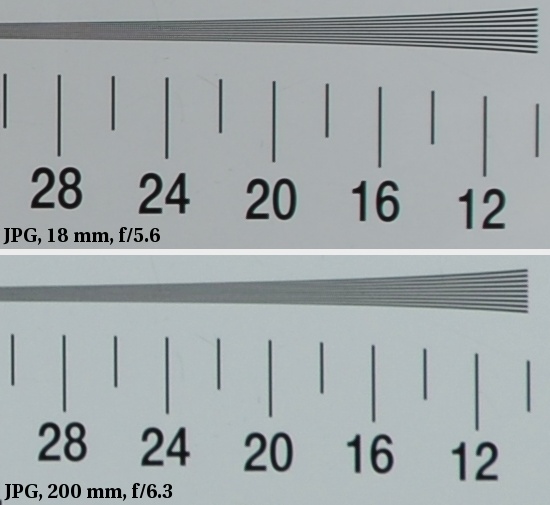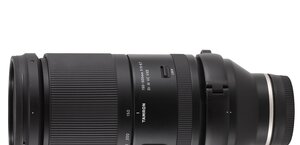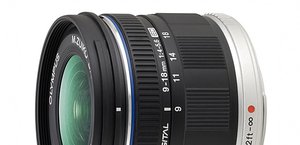Tamron AF 18-270 mm f/3.5-6.3 Di II VC LD Asph. (IF) MACRO
4. Image resolution
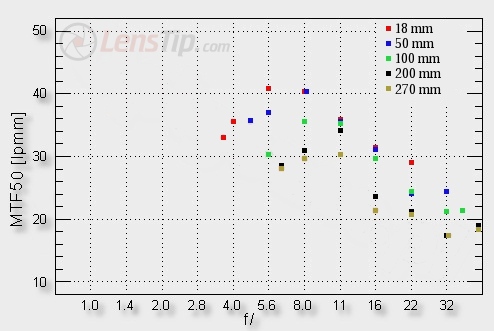
The results perhaps won’t bowl you over but, for such an all-purpose instrument, you can describe them as decent. The Tamron in the 18-50 mm range fares a bit worse than the Nikkor, at 100 mm both lenses perform similarly and at 200 mm the Nikkor is a tad better once again. The 270 mm focal length should be treated as the last resort because there, even on solid stopping down, we just brush against the decency level, set at 30 lpmm. What’s interesting, the 200 mm focal length seems to be useful and near f/11 it generates good quality images.
Please Support UsIf you enjoy our reviews and articles, and you want us to continue our work please, support our website by donating through PayPal. The funds are going to be used for paying our editorial team, renting servers, and equipping our testing studio; only that way we will be able to continue providing you interesting content for free. |
- - - - - - - - - - - - - - - - - - - - - - - - - - - - - - - - - - - - - - - - - - - - - - - -
The next curious thing is a bit of chaos at apertures stopped down the most – the results seem to defy the laws of physics. For example the MTFs by f/40 are higher than those by f/32. This situation is repeated at many focal lengths and appears to be independent of the test chart size. It might suggest some problems with stopping down the aperture – it seems it can perform at random when maximally closed, not having the value the lens transfers to the body.
The next graph presents the performance at the frame edge.
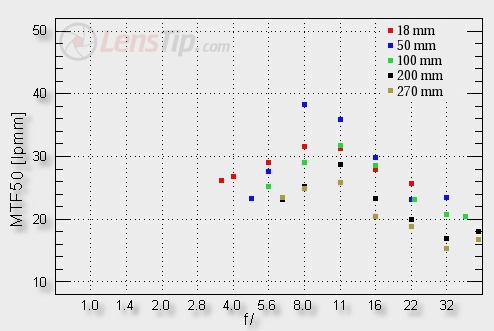
At the shortest focal length the lens fares very decently, although at the maximum relative aperture it definitely lags behind the Nikkor. The focal lengths of 50, 100 and 200 mm for a change are momentarily better than those of the Nikkor’s. The overall assessment of the Tamron at the edge of the frame might be even better than the Nikkor’s then! Like it was the case in the frame centre, also here the 270 mm focal length must be treated only as the last resort. Still the results the Tamron achieves at 270 mm are better than those the Nikkor shows at 200 mm.
Our test chart crops from JPEG files, saved along with RAW files, are presented below.
